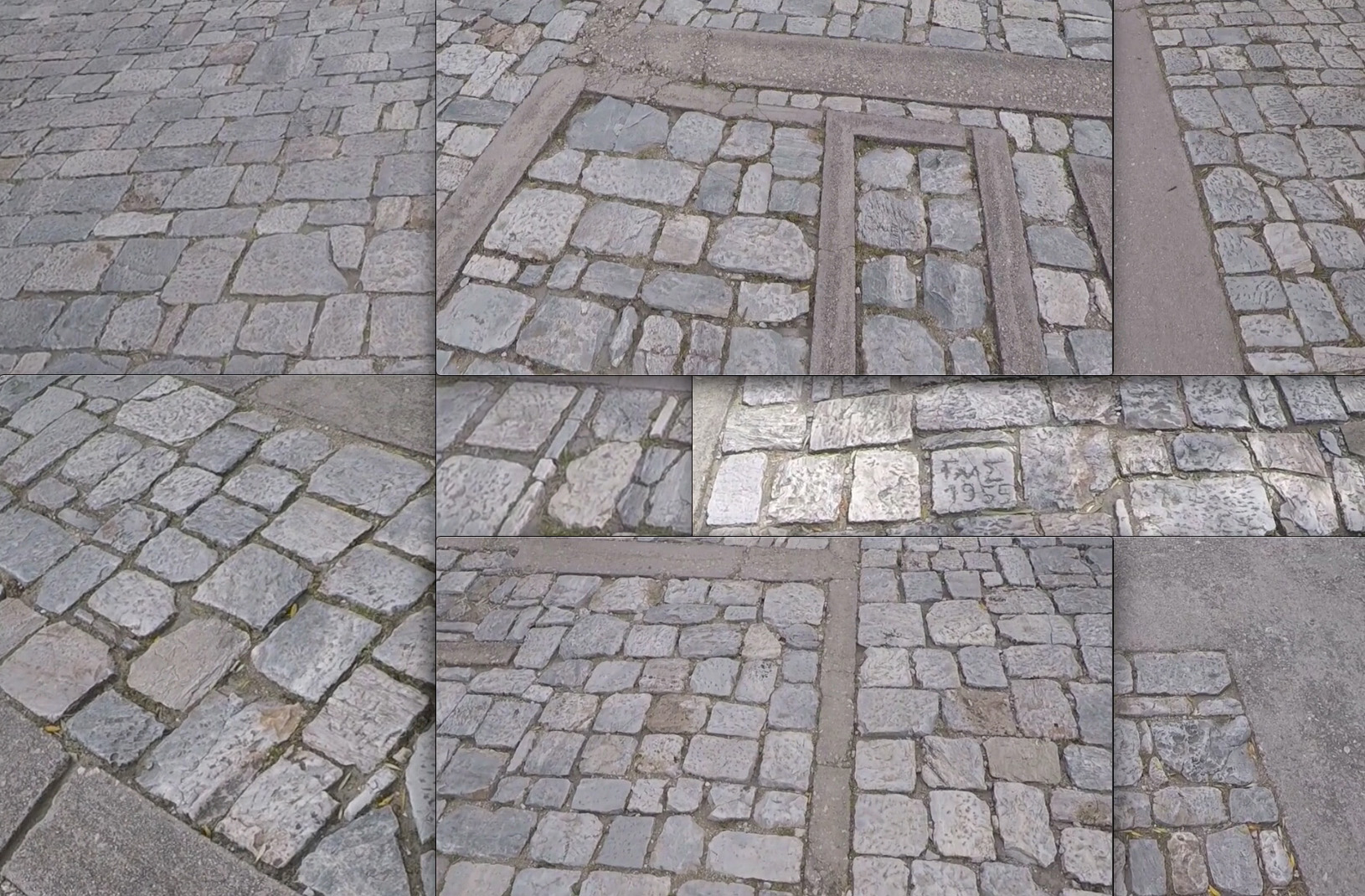Jan Jelinek: Hyperion
16.10. – 15.11.2020, in the 2-RaumJan Jelinek's film installation Hyperion looks at the paving of Dimitris Pikionis's paths, composed of an eclectic mix of fragment of classical and classicist buildings, modern concrete and natural stone found on site. The films are controlled by the composition.
Hyperion Composition
Is it possible to interpret Friedrich Hölderlin's Hyperion purely algorithmically? The Hyperion Composition approaches the epistolary novel of the same name through computer linguistics, analysing Hölderlin's text for repeated word and their respective contexts. The only self-contained word sequence among those that appear several times is ‘Eines zu sein mit Allem' (To be one with everything). The composition concentrates on this pentagram of words, interpreting it as a distillation of the novel's content and having it spoken by an online language programme (Natural Readers, voice: Berta). Through manipulation and extreme delay of the playback speed (time-stretch algorithms) the word repetitions ALLEM, EINS and SEIN are condensed into monumental artefacts of reverberation.
Hyperion Installation
Between 1954 and 1958, the architect Dimitris Pikionis designed a system of natural paths for the Acropolis and the adjacent Philopappos Hill. Hölderlin's novel and Pikionis's sensitive, intuitively improvised landscape design are united by the longing for an imaginary Greek identity. Both believed they had found a natural state in ancient Athens that did not separate man as a subject from nature as an object. Critical of rationalism, both Pikionis and Hölderlin sought this experience of oneness: ‘We have fallen away from our nature and what, if one can believe, was once One, now opposes itself ... To end that eternal conflict between our self and the world, to bring back that peace of all peace that is higher than all reason, to unite ourselves in one boundless and infinite whole - that is the goal of all our striving ...' (F. Hölderlin). ‘... it seems to me that nature wants to teach us that nothing exists for itself alone, but that everything is part of a superior harmony.' (D. Pikionis).
(Technical assistance: Karl Kliem)
